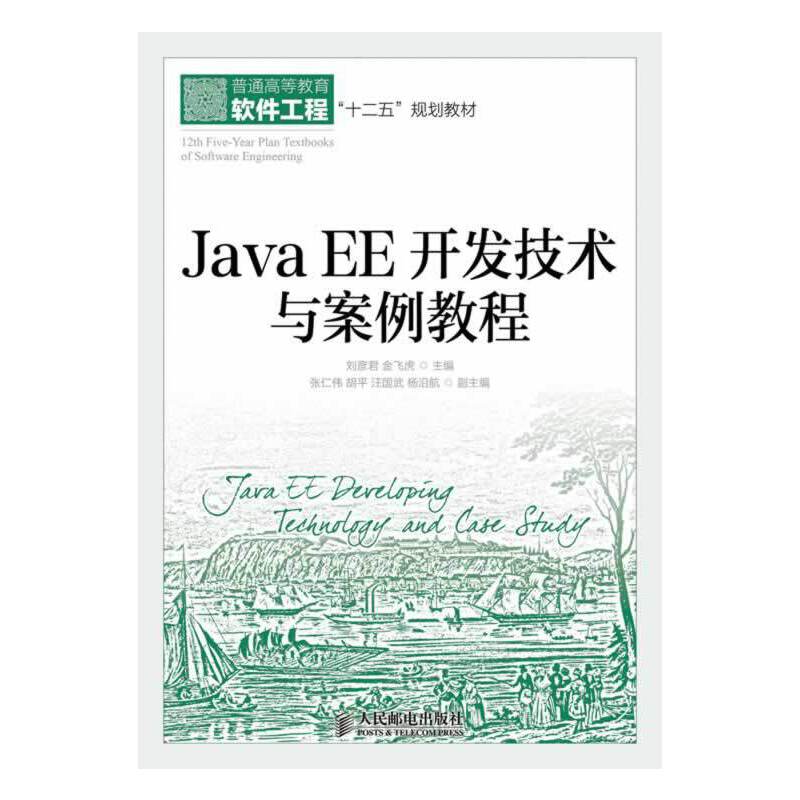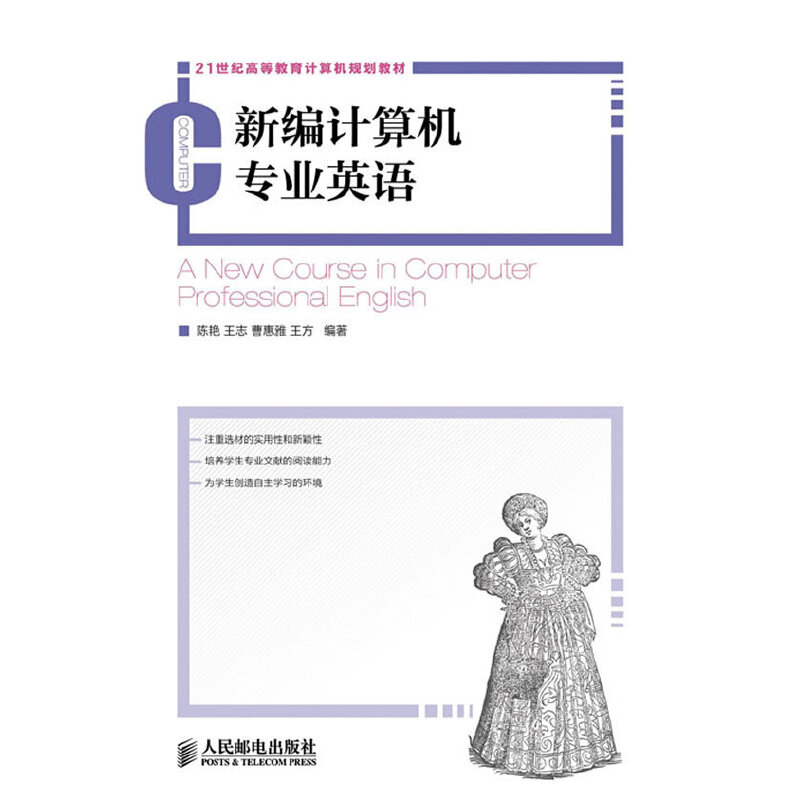商务英语语用学教程 / 高等院校十三五规划教材
定价:¥30.00
作者: 王静
出版时间:2016-07
出版社:南京大学出版社
- 南京大学出版社
- 9787305165818
- 146454
- 2016-07
- H31
内容简介
王静编著的《商务英语语用学教程(高等院校十三五规划教材)》作为商务英语语用学的入门教材,考虑到读者对象的层次和阅读目的,编者尽量采用通俗易懂的语言对语用学的主要理论和要点进行简单、入门式地介绍。全书共十章,分别为导论、言语行为理论、合作原则、礼貌原则、关联理论、顺应论、指示语、前提、会话分析和结论等。每章由案例、理论介绍、实际运用(I、II)、课后练习和进一步阅读书目五部分组成。鉴于模糊语言在商务英语中频繁出现的事实,本教程在结论部分从合作原则、礼貌原则、关联理论和顺应论四个角度分别对商务英语谈判、商务英语信函和商务英语合同等领域模糊语言的应用进行了简要解析。
目录
Chapter One Introduction
1.1 A brief history of pragmatics
1.2 Definitions of pragmatics
1.3 Two basic notions in pragmatic study
1.3.1 Component rspective
1.3.2 The scope of pragmatics
1.4 Business English in general
1.4.1 Definitions of business English
1.4.2 Characteristics of business English
1.5 Summary
Chapter Two Speech Act Theory
2.1 The three-stage development of speech act theory
2.2 Application: speech acts in business correspondence
2.2.1 Speech acts in letters of claim
2.2.2 Language strategies of speech acts in letters of claim
Chapter Three Conversational Implicature I: the Cooperative Principle
3.1 Implicature
3.2 The cooperative principle
3.2.1 The four conversational maxims
3.2.2 Observing the maxims
3.2.3 Non-observance of the maxims
3.3 Application: cooperative principle in business negotiation
3.3.1 Observance of the maxims
3.3.2 Non-observance of the maxims
3.3.3 Strategies in business negotiation based on the violation of the maxims
Chapter Four Conversational Implicature II: the Politeness Principle
4.1 The politeness principle
4.2 Face theory
4.3 Application I: politeness principle in C-E translation of business letters
4.3.1 Tact maxim in translation
4.3.2 Generosity maxim in translation
4.3.3 Approbation maxim in translation
4.3.4 Modesty maxim in translation
4.3.5 Agreement maxim in translation
4.3.6 Sympathy maxim in translation
4.4 Application II: face theory in business negotiation interpreting
4.4.1 Positive politeness strategy
4.4.2 Negative politeness strategy
4.4.3 Off record strategy
Chapter Five Relevance Theory
5.1 Relevance theory
5.1.1 Definition of relevance
5.1.2 Ostensive-inferential communication model
5.1.3 Contextual effects and processing efforts
5.1.4 Principles of relevance
5.2 Application: relevance theory in E-C translation of business
correspondence
5.2.1 Business correspondence
5.2.2 E-C translation strategies based on relevance theory
Chapter Six Adaptation Theory
6.1 Adaptation theory
6.1.1 Making choices
6.1.2 Three properties of language
6.1.3 Four angles of investigation
6.2 Application I: adaptation theory in business English translation
6.2.1 Adaptation to the social-cultural world
6.2.2 Adaptation to the psychological world
6.2.3 Adaptation to the linguistic context
6.3 Application II: adaptation analysis of euphemism in business communication
6.3.1 Adaptation to the mental world
6.3.2 Adaptation to the social world
6.3.3 Adaptation to the physical world
Chapter Seven Deixis
7.1 Deixis
7.1.1 Definition of deixis
7.1.2 Classification of deixis
7.2 ixis in international business lease contracts
7.2.1 Business lease contract corpus (BLCC)
7.3.2 Deixis in BLCC
Chapter Eight Presupposition
8.1 Presupposition
8.1.1 Historical background
8.1.2 Semantic presupposition
8.1.3 Pragmatic presupposition
8.1.4 Presupposition triggers
8.2 Application I: presupposition in English advertisement
8.2.1 Definite descriptions
8.2.2 Factive verbs
8.2.3 Implicative verbs
8.2.4 Change-of-state verbs
8.2.5 Iterative
8.2.6 Verbs of judging
8.2.7 Temporal clauses
8.2.8 Cleft sentences
8.2.9 Comparisons and contrasts
8.2.10 Counterfactual conditionals
8.2.11 Questions
8.3 Application II: Presupposition in business negotiation
8.3.1 Existential presupposition
8.3.2 Factive presupposition
8.3.3 State presupposition
8.3.4 Belief presupposition
8.3.5 Structural presupposition
8.3.6 Counter-factual presupposition
Chapter Nine Conversation Analysis
9.1 Conversation analysis
9.1.1 Turn-taking system
9.1.2 Manner of turn-taking
9.2 Application: turn-taking in Sino-US business negotiation
9.2.1 Turn-taking system in Sino-US business negotiation
9.2.2 Manner of turn-taking in Sino-US business negotiation
9.2.3 Characteristics of turn-taking in Sino-US business negotiation
Chapter Ten Conclusion: a Pragmatic Perspective Towards Vague Language
10.1 Overview of vague language
10.1.1 Definition of vague language
10.1.2 Distinguishing vague language from other terms--fuzziness, generality
and ambiguity
10.2 Vagueness in business negotiation--a perspective of cooperative principle
10.2.1 Cooperative principle
10.2.2 Cooperative principle and vagueness in business English negotiation
10.3 Vagueness in business correspondence--a perspective of politeness principle
10.3.1 Satisfying the tact maxim
10.3.2 Satisfying the approbation maxim
10.3.3 Satisfying the agreement maxim
10.3.4 Satisfying the sympathy maxim
10.4 Vagueness in business negotiation--a perspective of relevance theory
10.4.1 Business negotiation and the notion of relevance
10.4.2 Vague language in business negotiation under cognitive context
10.5 Vagueness in business contract--a perspective of adaptation theory
10.5.1 Vague language as adaptation to contextual correlates
10.5.2 Vague language as adaptation to psychological motivations
References
1.1 A brief history of pragmatics
1.2 Definitions of pragmatics
1.3 Two basic notions in pragmatic study
1.3.1 Component rspective
1.3.2 The scope of pragmatics
1.4 Business English in general
1.4.1 Definitions of business English
1.4.2 Characteristics of business English
1.5 Summary
Chapter Two Speech Act Theory
2.1 The three-stage development of speech act theory
2.2 Application: speech acts in business correspondence
2.2.1 Speech acts in letters of claim
2.2.2 Language strategies of speech acts in letters of claim
Chapter Three Conversational Implicature I: the Cooperative Principle
3.1 Implicature
3.2 The cooperative principle
3.2.1 The four conversational maxims
3.2.2 Observing the maxims
3.2.3 Non-observance of the maxims
3.3 Application: cooperative principle in business negotiation
3.3.1 Observance of the maxims
3.3.2 Non-observance of the maxims
3.3.3 Strategies in business negotiation based on the violation of the maxims
Chapter Four Conversational Implicature II: the Politeness Principle
4.1 The politeness principle
4.2 Face theory
4.3 Application I: politeness principle in C-E translation of business letters
4.3.1 Tact maxim in translation
4.3.2 Generosity maxim in translation
4.3.3 Approbation maxim in translation
4.3.4 Modesty maxim in translation
4.3.5 Agreement maxim in translation
4.3.6 Sympathy maxim in translation
4.4 Application II: face theory in business negotiation interpreting
4.4.1 Positive politeness strategy
4.4.2 Negative politeness strategy
4.4.3 Off record strategy
Chapter Five Relevance Theory
5.1 Relevance theory
5.1.1 Definition of relevance
5.1.2 Ostensive-inferential communication model
5.1.3 Contextual effects and processing efforts
5.1.4 Principles of relevance
5.2 Application: relevance theory in E-C translation of business
correspondence
5.2.1 Business correspondence
5.2.2 E-C translation strategies based on relevance theory
Chapter Six Adaptation Theory
6.1 Adaptation theory
6.1.1 Making choices
6.1.2 Three properties of language
6.1.3 Four angles of investigation
6.2 Application I: adaptation theory in business English translation
6.2.1 Adaptation to the social-cultural world
6.2.2 Adaptation to the psychological world
6.2.3 Adaptation to the linguistic context
6.3 Application II: adaptation analysis of euphemism in business communication
6.3.1 Adaptation to the mental world
6.3.2 Adaptation to the social world
6.3.3 Adaptation to the physical world
Chapter Seven Deixis
7.1 Deixis
7.1.1 Definition of deixis
7.1.2 Classification of deixis
7.2 ixis in international business lease contracts
7.2.1 Business lease contract corpus (BLCC)
7.3.2 Deixis in BLCC
Chapter Eight Presupposition
8.1 Presupposition
8.1.1 Historical background
8.1.2 Semantic presupposition
8.1.3 Pragmatic presupposition
8.1.4 Presupposition triggers
8.2 Application I: presupposition in English advertisement
8.2.1 Definite descriptions
8.2.2 Factive verbs
8.2.3 Implicative verbs
8.2.4 Change-of-state verbs
8.2.5 Iterative
8.2.6 Verbs of judging
8.2.7 Temporal clauses
8.2.8 Cleft sentences
8.2.9 Comparisons and contrasts
8.2.10 Counterfactual conditionals
8.2.11 Questions
8.3 Application II: Presupposition in business negotiation
8.3.1 Existential presupposition
8.3.2 Factive presupposition
8.3.3 State presupposition
8.3.4 Belief presupposition
8.3.5 Structural presupposition
8.3.6 Counter-factual presupposition
Chapter Nine Conversation Analysis
9.1 Conversation analysis
9.1.1 Turn-taking system
9.1.2 Manner of turn-taking
9.2 Application: turn-taking in Sino-US business negotiation
9.2.1 Turn-taking system in Sino-US business negotiation
9.2.2 Manner of turn-taking in Sino-US business negotiation
9.2.3 Characteristics of turn-taking in Sino-US business negotiation
Chapter Ten Conclusion: a Pragmatic Perspective Towards Vague Language
10.1 Overview of vague language
10.1.1 Definition of vague language
10.1.2 Distinguishing vague language from other terms--fuzziness, generality
and ambiguity
10.2 Vagueness in business negotiation--a perspective of cooperative principle
10.2.1 Cooperative principle
10.2.2 Cooperative principle and vagueness in business English negotiation
10.3 Vagueness in business correspondence--a perspective of politeness principle
10.3.1 Satisfying the tact maxim
10.3.2 Satisfying the approbation maxim
10.3.3 Satisfying the agreement maxim
10.3.4 Satisfying the sympathy maxim
10.4 Vagueness in business negotiation--a perspective of relevance theory
10.4.1 Business negotiation and the notion of relevance
10.4.2 Vague language in business negotiation under cognitive context
10.5 Vagueness in business contract--a perspective of adaptation theory
10.5.1 Vague language as adaptation to contextual correlates
10.5.2 Vague language as adaptation to psychological motivations
References





